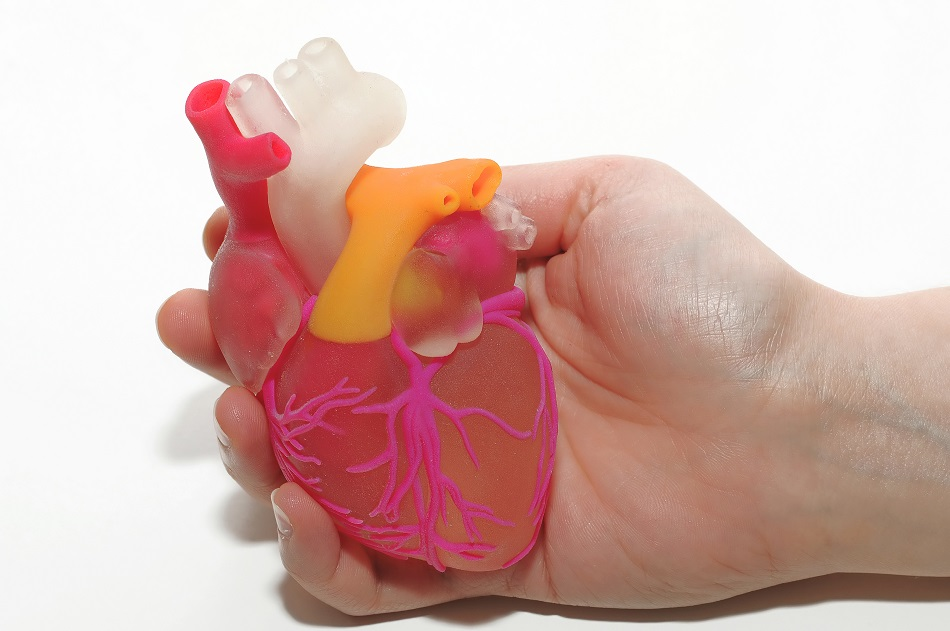
Image Credit: The World in HDR/Shutterstock.com
The integration of three-dimensional (3D) printing into medicine has revolutionized healthcare in many ways, ranging from enhancing curriculums through to the creation of customized anatomical models to pharmaceutical research projects focused on drug dosage forms. The clinical use of 3D printing in surgery has gained considerable success as well by: creating patient-specific pathological models to assist during surgical planning; designing customized prostheses, and creating affordable surgical models that can be used as teaching aids.
Improving Surgical Plans
High resolution and quality diagnostic tools like X-ray, magnetic resonance imaging (MRI) and computed tomography (CT) scans have drastically improved the way in which medical diagnoses and surgical plans are made.
While this may be true, surgeons are still faced with the challenge of taking these two-dimensional (2D) images and creating a comprehensive surgical plan that will eventually be applied to the three-dimensional (3D) architecture of the human body. As surgeons become more seasoned this eventually becomes second nature; however, irregular anatomical structures that result from disease-related distortions can still complicate the preoperative process.
Rapidly evolving 3D printing technology has drastically enhanced the way in which modern surgeons overcome the aforementioned shortcomings. To begin, a volumetric dataset that has been acquired from either multi-detector computed tomography (MDCT) or MRI is translated into a virtual 3D model that provides the template for 3D printing any anatomical model of interest.
In addition to reducing surgical preparation time, 3D printed models also provide surgeons with a unique sensory perception of the anatomical structure that would not otherwise be possible until the surgical procedure has begun.
Better Patient Outcomes
Not only do these printed models provide technical assistance to surgeons but they have also been shown to reduce post-surgical pain and recovery time for patients. These added benefits are achieved through the significantly greater level of accuracy that is achieved following the creation of a 3D model of the patient’s anatomical structure.
Consider a routine knee replacement surgery – the use of a highly accurate 3D print during the surgical planning stage eliminates any positioning errors that the surgeon would otherwise encounter. Furthermore, the improved precision of knee implant placement subsequently leads to better biomechanics, which will ultimately allow the patient to experience much more natural movement of the knee while also reducing any unwanted wear from damaging the implant while in use.
3D Printed Prostheses
With the earliest prostheses dating back to as early as ancient Egyptian times, the technology behind these devices has transformed the lives of millions of individuals that have previously undergone amputation procedures. In 2012, the first 3D printed upper-extremity prosthesis device was created in an effort to regain a carpenter’s dexterity after it was lost during a serious accident the year before. This revolutionary prosthetic device, which was ultimately given the name of Robohand, utilized the wrist-flexion that remained intact on the residual limb in order to activate uniform contraction of the 3D printed fingers.
Since the development and successful application of the Robohand, researchers and maker enthusiasts from around the world began to realize the impact that this technology could have on the future of prostheses. These endeavors have not only allowed for the rapid production and iteration of custom-sized and robust prosthetic devices to be used by surgeons, prosthetists, and therapists around the world but have also opened the door for improving access and quality care of prosthetics.
As 3D printed prosthetics become more commonplace in this area of medicine, researchers are looking at ways in which they can improve this technology, such as through the incorporation of biosensing and/or electromechanical motors that would accommodate for higher degrees of limb loss.
Conclusion
It is evident that 3D printing technology has revolutionized many aspects of surgical medicine. From the ability to construct patient-specific pathological models for surgical planning to the creation of customized and highly technical prostheses, 3D printing technology is clearly changing the way in which surgical care is performed on a daily basis.
Sources and Further Reading
- Pugliese, L., Marconi, S., Negrello, E., Mauri, V., Peri, A., et al. (2018). The clinical use of 3D printing in surgery. Updates in Surgery 70; 381-388. DOI: 10.1007/s13304-018-0586-5.
- Manero, A., Smith, P., Sparkman, J., Dombrowski, M., et al. (2019). Implementation of 3D Printing Technology in the Field of Prosthetics: Past, Present and Future. International Journal of Environmental Research and Public Health 16(9). DOI: 10.3390/ijerph16091641.
- Rath, S. N., & Sankar, S. (2017). 7 – 3D printers for surgical practice. 3D Printing in Medicine; 137-154. DOI: 10.1016/B978-0-08-100717-4.00009-0.
- “Can 3D Printing Improve Your Medical Care?” – Yale Medicine
Disclaimer: The views expressed here are those of the author expressed in their private capacity and do not necessarily represent the views of AZoM.com Limited T/A AZoNetwork the owner and operator of this website. This disclaimer forms part of the Terms and conditions of use of this website.